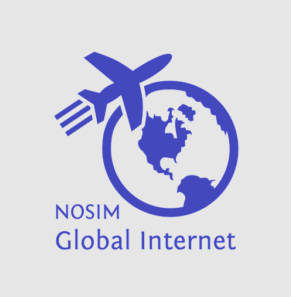Remember the good old days when swapping SIM cards meant poking your phone with a tiny metal pin, only to watch the SIM tray fly under the fridge, never to be seen again?
Well, those days are over, thanks to eSIM technology.
The digital disruptor that’s making physical SIM cards look like ancient artifacts.
Embedded SIMs (eSIMs) are tiny, but don’t be fooled by their size.
They’re shaking up the telecom industry, making life easier for consumers while sending mobile carriers scrambling to adapt.
Thinking of switching networks?
No more cumbersome SIM swapping.
Want a local data plan while traveling?
Forget having to hunt down a random kiosk at the airport.
In this article, we dive into why eSIMs are the future of connectivity, why smartphone makers are ditching physical SIM slots faster than you can say “outdated tech,” and how this tiny chip is making a big impact on everything from business communication to the environment.
How Does eSIM Work For Travelers?
Source: Unsplash
eSIM technology operates by embedding a small chip directly into a device during manufacturing.
Unlike traditional SIM cards, which require physical insertion and removal, eSIMs store network information digitally.
Users can download carrier profiles through QR codes or apps provided by their service providers.
This process simplifies switching between carriers or activating new plans.
Devices equipped with eSIMs support multiple profiles, allowing users to manage personal and work lines or access local networks while traveling.
The absence of a physical card also enhances device durability and design possibilities.
One significant advantage of eSIMs is their ability to streamline connectivity.
Users no longer need to visit stores or wait for physical SIM cards to arrive.
Activating a new plan becomes a matter of scanning a code or downloading a profile.
For travelers, eSIMs eliminate the hassle of swapping SIM cards when crossing borders.
Local data plans can be purchased and activated instantly, ensuring uninterrupted access to networks.
Families benefit as well, as shared devices can host separate profiles for different users.
Additionally, eSIMs reduce electronic waste by removing the need for plastic SIM cards.
Their compact design allows manufacturers to create thinner, more efficient devices without sacrificing functionality.
Why Are Smartphone Manufacturers Switching To eSIM?
Device manufacturers gain several advantages from integrating eSIM technology.
Removing the physical SIM tray frees up internal space, enabling larger batteries or additional components.
This shift supports the trend toward sleeker, more durable designs.
Manufacturers also experience reduced production complexity.
Producing devices without SIM trays minimises assembly steps and material costs.
Furthermore, eSIM compatibility aligns with the growing demand for smartwatches, tablets, and IoT devices that rely on seamless connectivity.
eSIM Technology: Revolutionizing Mobile Carriers And Network Providers
Source: Unsplash
Carriers are adapting to the rise of eSIMs by streamlining their processes.
Digital profile delivery reduces reliance on physical infrastructure, such as retail outlets and logistics networks.
This shift lowers operational costs and improves efficiency.
eSIMs also enable carriers to offer innovative services.
For instance, temporary data plans tailored to specific events or locations become easier to implement.
Remote provisioning allows carriers to onboard customers quickly, enhancing user satisfaction.
However, carriers must address challenges like ensuring secure profile management and maintaining compatibility across regions.
Collaborating with manufacturers and regulators will help overcome these hurdles.
How eSIM Technology Is Transforming Business Connectivity And IT Management
Businesses increasingly rely on eSIMs to improve communication and operational efficiency.
Employees working remotely or traveling frequently benefit from the ability to switch between work and personal lines seamlessly.
Corporate devices equipped with eSIMs simplify IT management.
Administrators can monitor and update connectivity settings remotely, ensuring compliance with security protocols.
This centralized control reduces the risk of breaches and enhances productivity.
Industries such as logistics and healthcare leverage eSIMs for IoT applications.
Connected sensors, trackers, and medical devices depend on reliable network access, which eSIMs provide without the limitations of physical SIM cards.
Environmental Benefits Of eSIMs: Reducing Plastic Waste And Carbon Footprint
Source: Pexels
The widespread adoption of eSIMs contributes to sustainability efforts within the telecom industry.
Traditional SIM cards generate significant plastic waste, much of which ends up in landfills.
By eliminating this material, eSIMs reduce environmental harm.
Manufacturing and distributing physical SIM cards also consume resources, including energy and transportation fuels.
Transitioning to digital profiles minimises these impacts, aligning with global initiatives to combat climate change.
While the environmental benefits of a single eSIM may seem minimal, their cumulative effect across millions of devices is substantial.
This shift underscores the role of technology in promoting eco-friendly practices.
Key Challenges Hindering Widespread eSIM Adoption: Why Some Users And Carriers Are Hesitant
Despite its potential, eSIM technology faces obstacles that hinder widespread adoption.
Not all carriers currently support eSIM functionality, limiting availability in certain regions.
Older devices lack the necessary hardware, requiring users to upgrade to take advantage of this innovation.
Consumer awareness remains another challenge.
Many people are unfamiliar with eSIMs and their benefits, leading to hesitation in adopting the technology.
Clear education and guidance from manufacturers and carriers can address this gap.
Technical issues, such as profile activation errors or connectivity problems, may also arise.
Ensuring robust customer support and troubleshooting tools will enhance user confidence and satisfaction.
Latest Innovations In eSIM Technology: What’s Next For Mobile Connectivity?
Source: Pexels
Ongoing innovations in eSIM technology promise to further revolutionise connectivity.
Manufacturers and carriers are exploring features like automated profile switching based on location or activity patterns.
This functionality would simplify tasks like activating local data plans while traveling.
Advancements in security measures ensure eSIM profiles remain protected from unauthorized access.
Encryption protocols and remote deactivation capabilities safeguard sensitive information, addressing concerns about data breaches.
Integration with emerging technologies, such as 5G networks and IoT ecosystems, expands the potential applications.
These developments position eSIMs as a cornerstone of future connectivity solutions.
The Role Of Government Regulations In eSIM Adoption And Security
Source: Pexels
Regulatory frameworks play a critical role in shaping the future of eSIM technology.
Governments and industry bodies must establish standards to ensure interoperability and security.
Without consistent guidelines, fragmentation could hinder progress.
Collaboration between regulators, carriers, and manufacturers fosters an environment conducive to innovation.
Addressing privacy concerns and ensuring fair competition will build trust among consumers and businesses alike.
As eSIM adoption grows, regulatory oversight will evolve to address emerging challenges.
Striking a balance between fostering innovation and protecting users remains a priority.
Why eSIMs Are The Future Of Connectivity: What Consumers And Businesses Should Expect
Source: Pexels
The rise of eSIMs signals a shift toward a fully connected world.
Devices ranging from smartphones to wearables and IoT gadgets rely on seamless network integration, which eSIMs facilitate.
Consumers, businesses, and industries stand to benefit from this transition.
Streamlined connectivity, enhanced flexibility, and reduced environmental impact highlight the transformative potential of eSIMs.
Staying informed about updates ensures that users and organisations maximise the advantages of eSIM technology.
Regularly exploring new features and engaging with carrier support keeps devices operating efficiently.
Ready to embrace the future of connectivity?
Explore one of the best eSIM providers on the market today!
Related to eSIM’s improved connectivity:
What Is An eSIM? A Beginner’s Guide To Understanding Embedded SIM Technology
eSIM Vs Physical SIM: The Ultimate Showdown Of 2025









